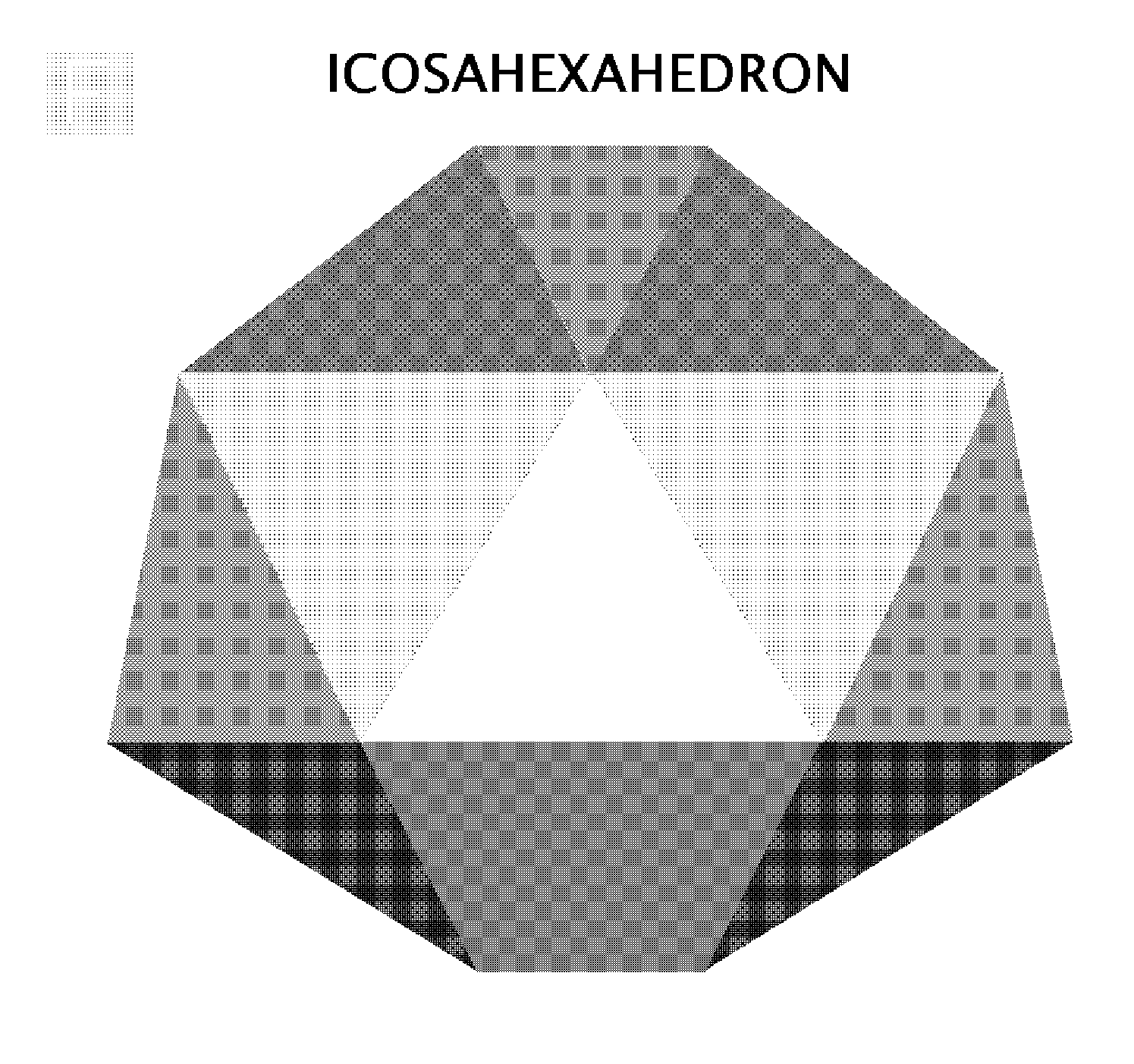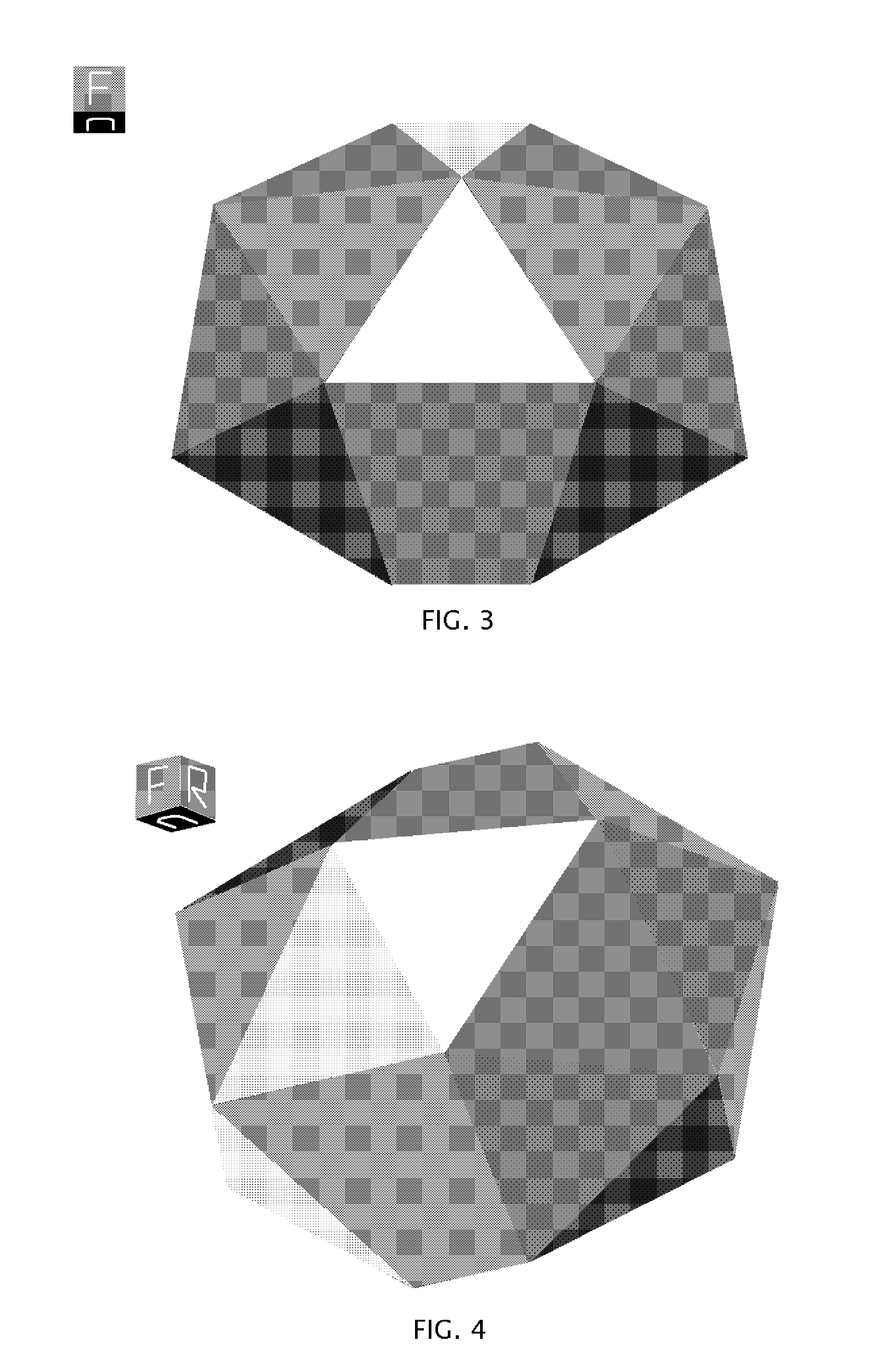26-Sided 16-Vertex Icosahexahedron Space Structure
a space structure and icosahexahedron technology, applied in constructions, building roofs, building components, etc., can solve the problems of high variety of dimensional sizes and angles, requiring much increased labor, moisture problems in the roof, etc., and achieve the effect of less symmetrical
- Summary
- Abstract
- Description
- Claims
- Application Information
AI Technical Summary
Benefits of technology
Problems solved by technology
Method used
Image
Examples
Embodiment Construction
[0088] The 26 sided semi-regular polyhedron can be a planar solid, as in FIG. 1, a wireframe, as in FIG. 13 or hollow solid with a shell thickness of varying depth defined by the definition vertices of the structure where all struts connect, extruded either inward toward inside the structure or outward away from the surface of the planes defined by the defining points of the structure, defined further in following discussion.
[0089] The structure is considered semi-regular for the reason that it is made up of 20 exact equilateral triangles, which are regular, but also a non-regular family of 3 pairs (another six) of isosceles triangles, which are all linked in their characteristics mathematically, to total 26 panels making up the structure.
[0090] Further, the structure has a unique resulting paradoxical semi-symmetry, or semi-asymmetry. From various views the structure is very symmetrical, as in FIGS. 7 & 8 and 9&10. In other views it becomes very graphically asymmetrical, as in FI...
PUM
 Login to View More
Login to View More Abstract
Description
Claims
Application Information
 Login to View More
Login to View More - R&D
- Intellectual Property
- Life Sciences
- Materials
- Tech Scout
- Unparalleled Data Quality
- Higher Quality Content
- 60% Fewer Hallucinations
Browse by: Latest US Patents, China's latest patents, Technical Efficacy Thesaurus, Application Domain, Technology Topic, Popular Technical Reports.
© 2025 PatSnap. All rights reserved.Legal|Privacy policy|Modern Slavery Act Transparency Statement|Sitemap|About US| Contact US: help@patsnap.com



